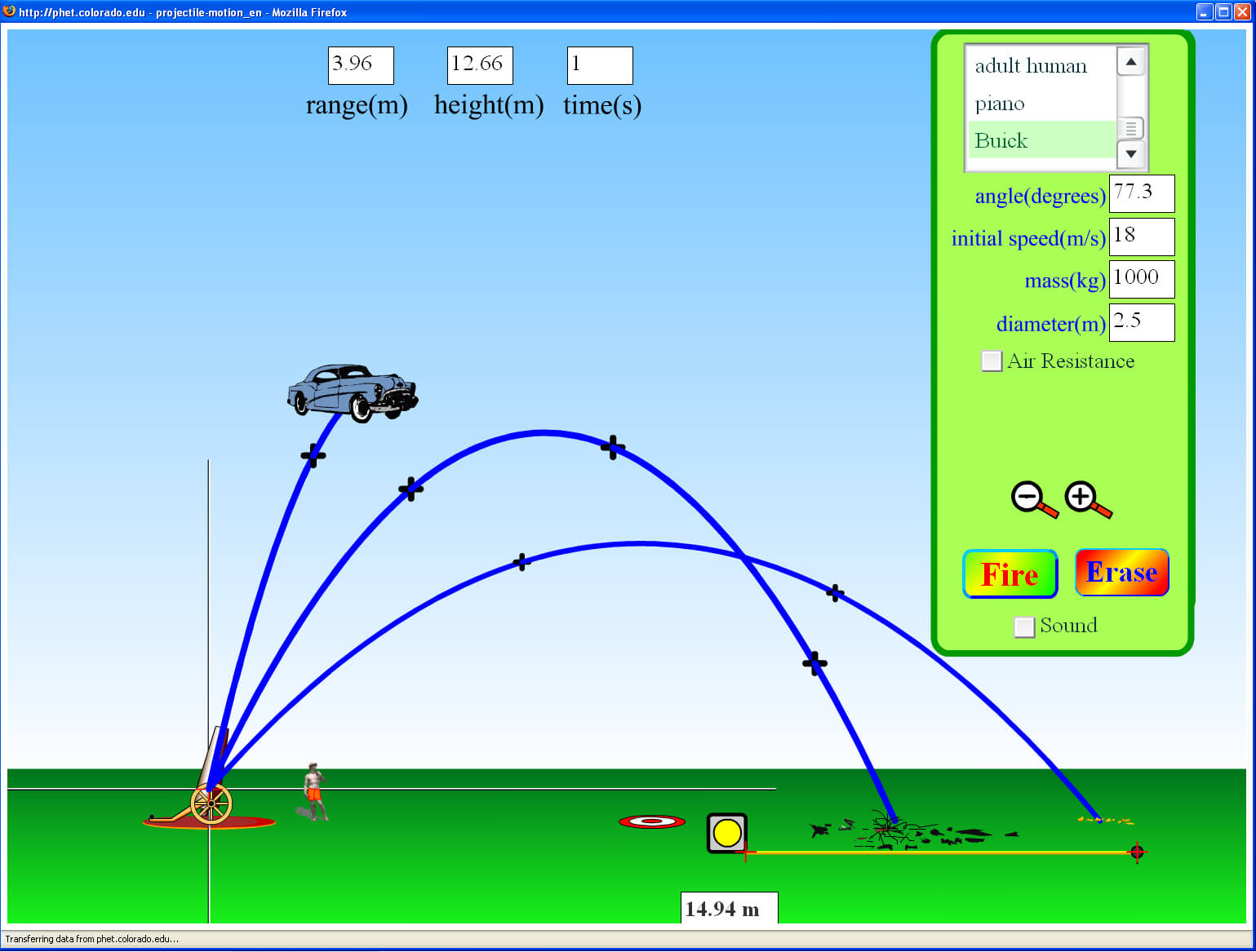

(This choice of axes is the most sensible, because acceleration due to gravity is vertical-thus, there will be no acceleration along the horizontal axis when air resistance is negligible.) As is customary, we call the horizontal axis the x-axis and the vertical axis the y-axis. The key to analyzing two-dimensional projectile motion is to break it into two motions, one along the horizontal axis and the other along the vertical. This fact was discussed in Kinematics in Two Dimensions: An Introduction, where vertical and horizontal motions were seen to be independent. The most important fact to remember here is that motions along perpendicular axes are independent and thus can be analyzed separately. It provides an introduction into the thre. In this section, we consider two-dimensional projectile motion, such as that of a football or other object for which air resistance is negligible. This video tutorial provides the formulas and equations needed to solve common projectile motion physics problems. In this equation, u stands for initial velocity magnitude and refers to projectile angle. The motion of falling objects, as covered in Problem-Solving Basics for One-Dimensional Kinematics, is a simple one-dimensional type of projectile motion in which there is no horizontal movement. The object is called a projectile, and its path is called its trajectory. Projectile motion is the motion of an object thrown or projected into the air, subject to only the acceleration of gravity. Treat the motion as two independent one-dimensional motions, one horizontal with constant velocity and the other vertical with constant acceleration. Resolve or break the motion into horizontal and vertical components along the x- and y-axes. 3.A.1.3 The student is able to analyze experimental data describing the motion of an object and is able to express the results of the analysis using narrative, mathematical, and graphical representations. The following steps are then used to analyze projectile motion: Step 1. Projectile motion is the motion of an object thrown or projected into the air, subject only to acceleration as a result of gravity.3.A.1.1 The student is able to express the motion of an object using narrative, mathematical, and graphical representations.The information presented in this section supports the following AP® learning objectives:

Apply the principle of independence of motion to solve projectile motion problems.Determine the location and velocity of a projectile at different points in its trajectory.Identify and explain the properties of a projectile, such as acceleration due to gravity, range, maximum height, and trajectory.By the end of this section, you will be able to:


 0 kommentar(er)
0 kommentar(er)
